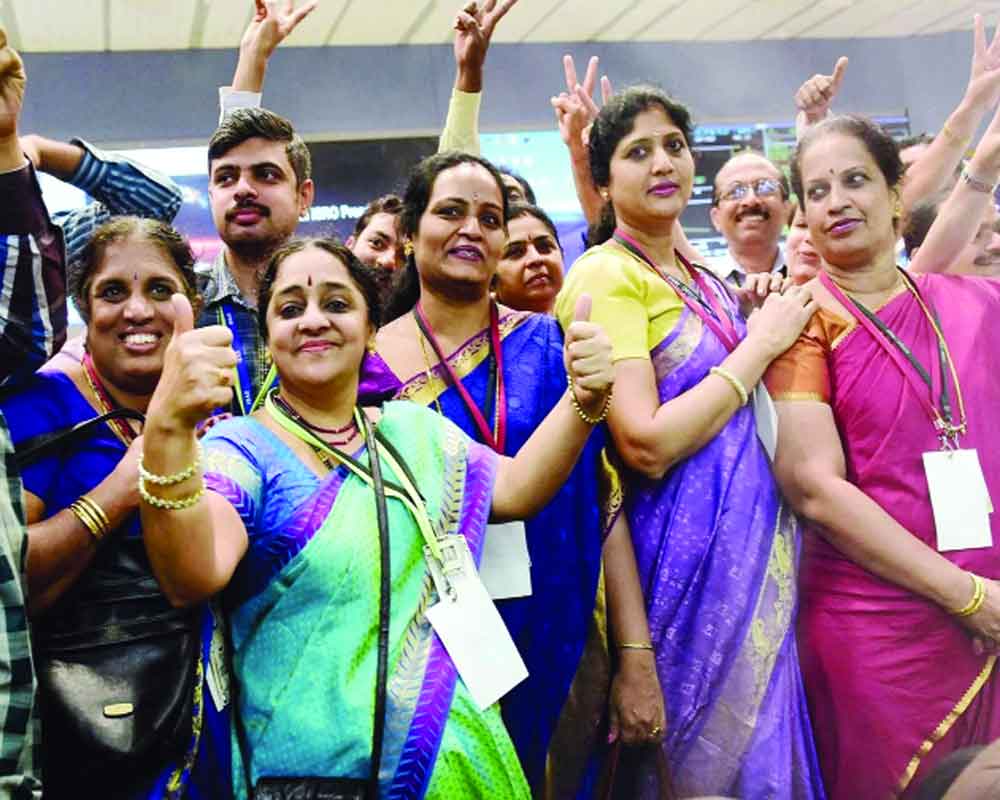Women’s participation in the technology sector presents a mixed scenario. While some women have been important players, general progress has been disappointing
With the Lok Sabha elections not so far away, and political parties gearing up to select candidates to contest on their behalf, one needs to remember that women’s representation in the National Parliament, state legislatures, as well as the corridors of power, has been rather poor. Things are, doubtless, no better—and, in some cases, much worse—in most other countries, including the much-vaunted western democracies. Nor is politics the only sector in India and the world where women suffer a raw deal. Between 1901, when it was first awarded, and 2023, 965 individuals and 27 organisations received the Nobel Prize, some twice. Of them only 64 were women, with one of them, Marie Curie receiving it twice—in 1903 and 1911. The gender disparity has been particularly staggering in some areas. Women, for example, have accounted for only five out of the 225 recipients in physics, 13 out of 214 in medicine, eight out of 186 in chemistry and three out of 90 in economics.
Even in areas where more women have been recipients, the figures are 19 out of 92 in peace and 17 out of 103 in literature. There has, of course, been of late, an upward trend, but women still have miles to traverse to achieve something even close to parity with men in this area.
It is not just the case of the Nobel Prize. Compared to men, women are grossly under-represented in every domain of human activity outside the confines of domesticity. It is not possible to examine the situation in all of these in a column. Given, however, the fact that these multiple disciplines have many common parameters and function in the same defining environment, it will be useful to focus on any one of them for a picture roughly indicative of how things generally are. In this context, it would be both interesting and instructive to look at the technology sector, the cutting edge of civilisational progress both globally and nationally.
Gitanjali Singh, global head of strategy and new business growth of a transnational IT company, cites a survey by womenintech.co.uk as stating that women accounted for 26 per cent of the workforce in the technology sector globally. While this marked an improvement over the figure of 19 per cent in 2019, it has by no means been enough for uncorking champagne bottles. Turning to the US, Singh refers to a Forbes magazine report stating that women held a mere 26.7 per cent of the technology jobs. She further points out that, even in the case of women committed to building careers, it was “harder for them to pitch their ideas, get equal wages and timely promotions, access mentoring, and networking opportunities, and earn a seat at the boardroom table.” She refers to a report by the global management consultancy firm, McKinsey and Company, as stating in 2022 that for every 100 men promoted to managerial positions across all industries, 86 women were promoted. The number was lower in the technology industry—52 women promoted for every 100 men.
In India, women’s participation in the technology sector presents a mixed scenario. While some of them have been important players at the highest level, general progress has been disappointing. According to a report by Deutsche Welle published in Frontline (August 29, 2023), over 100 women scientists and engineers contributed to the Chandrayaan 3 mission landing a lunar rover on the moon. Not only that, India became, in the process, the first country to place a spacecraft near the moon’s south pole. The report mentions S. Somanath, chairman of the Indian Space Research Organisation (ISRO), which is in overall charge of India’s space programme including projects like Chandrayaan 3, talking about how women were involved in conceptualising, designing and executing the mission, and adding, “Some of them played a significant role in navigation during the lander’s critical descent.”
All this could, doubtless, happen because there were women with adequate qualifications and leadership capabilities. The Deutsche Welle report cited above, mentions World Bank data indicating that women made up nearly 43 per cent of the total STEM (Science, Technology, Engineering and Mathematics) graduates in India, one of the highest in the world. Further, Gitanjali Singh refers to NASSCOM's 'Strategic Review 2023,' stating that out of 5.4 million IT workers in India, 30 per cent were women. Other figures project a dismal picture. According to the Deutsche Welle report, a nationwide survey found that women made up only 13 per cent of scientists and science faculty at Indian higher education and research institutions. Even at ISRO, women employees accounted for 20 to 25 per cent of its total workforce of over 16,000 persons.
Finally, the inevitable question: what is to be done? The exhortation that government and research institutions, and business undertakings, need to make a special effort has acquired the status of venerable cliché. Nevertheless, it has its kernel of truth. What one needs are specific and carefully calibrated measures. The main thrust has to come from the political arena. Hence the importance of having more women Members of Parliament, and their actively pursuing the cause of gender equality and justice.
(The author is Consulting Editor, The Pioneer. The views expressed are personal)


























